The Cost of Installing a Thermal Store
Last updated 8th February, 2024
Want to know more about thermal stores?
All you need to know about installing a thermal store, including how they work, the cost of labour and materials as well as the different types of system available.
Continue reading below!
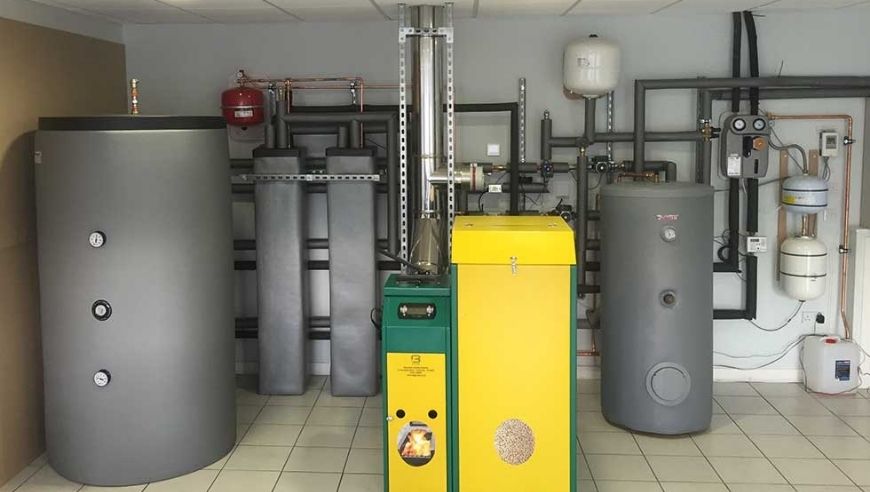
How Much Does Installing a Thermal Store Cost?
When deciding what thermal store to install, it is essential to determine what heat source or sources will be used with it.
This is turn will depend on several factors such as the size and heating requirements of the house, the number of occupants and the budget of the homeowner. An average UK home has a heat requirement of between 6 kW -8kW degrees at peak times but each house will be different and have varying levels of insulation.
Therefore, it is essential before paying for a thermal store that you engage a heating engineer to carry out a heat loss survey on your home. Any issues with a lack of adequate insulation should be fixed before installing the thermal store.
It is also worth considering how much the upgrading of insulation will add to your budget. It is natural to want to save money and think that buying a good quality thermal store cylinder will solve your energy problems.
Unfortunately, you may be wasting money on both the cylinder and your bills if you do not fit the correct thermal store for your individual property’s needs. Buying too big a thermal store may mean it is never going to be cost-effective while buying too small may mean it is working too hard and may wear out more quickly.
Thermal store installation costs are considerable, and you should ensure that you are installing the right cylinder for your home. The average cost of a thermal store cylinder is in the region of £1,800.
This price will depend on the exact nature and specification of the thermal store, what features it has and its size. Multi-fuel models come with tappings for solar panels, solid fuel, air and ground source heat pumps and conventional gas or electric heating.
These range in price from £2,000-£4,000 and can manage the energy needs of the house, prioritising the cheaper, renewable energies over the more expensive ones which are then used as a back-up.
Direct cylinders will heat the supply water within the thermal store usually by an immersion heater. A single coil direct cylinder is, as the name implies, fitted with just one copper coil and they range in price from £900-£1,100.
Twin coil versions cost between £1,000-£1,150. Indirect cylinders have their supply store of water heated from a separate heat source usually a boiler.
They typically have twin coils and cost in the region of £1,000-£1,100. Twin coil thermal stores are even more efficient as the first coil acts as pre-heater for the cold water; therefore, less energy is expended getting it up to temperature.
Electric thermal stores with or without isolation kits cost between £750-£1,550 and are suitable for smaller properties such as flats. The majority of thermal stores are vented, which makes them inherently safe and suitable to be fitted anywhere within a property.
It also means that an experienced plumber can fit these cylinders without the need for G3 qualification which applies to all unvented cylinders. The vented thermal stores range in price from £950-£1,400.
The cost to hire a heating engineer in the London area will cost around £100-£160 per hour and approximately £550 per day.
An experienced plumber in London will charge between £100-£135 per hour and about £530 per day. In other parts of the UK, a heating engineer will charge anything between £30-£70 per hour and £250 per day.
So, it is clear that where in the UK your property is located will have a significant impact on the thermal store installation cost. The other influencing factor in a thermal store installation cost is the ease of access to the location of the thermal store.
It is advisable to install it somewhere with space around it for ease of installation and maintenance, but this may not always possible, especially in homes where space is limited.
Therefore, the more difficult and complex the installation, the more it will cost in labour charges.
Table of Contents
- How much does installing a thermal store cost?
- Labour costs and time frames
- What is a thermal store?
- How does a thermal store work?
- What does installing a thermal store entail?
- Cost affecting factors of installing a thermal store
- DIY thermal store
- Type of thermal store
- Benefits of a thermal store
- Removing a thermal store cost
- FAQs
- How to find & hire a thermal store installer
- Sources
Installing Thermal Store Prices
The prices below reflect the average cost of nine various types of thermal store cylinders, each with a different specification and designed for different types of installation depending on client preference and appropriate heat source.
| TYPE | CYLINDER COST | LABOUR COST | TOTAL COST |
|---|---|---|---|
| Multi-fuel | £3,000 | £500-£1,000 | £3,500-£4,000 |
| Indirect Twin Coil with cold section | £1,050 | £500-£1,000 | £1,550-£2,050 |
| Indirect Vented Twin Coil | £1,050 | £500-£1,000 | £1,550-£2,050 |
| Direct Single Coil with cold section | £1,050 | £500-£1,000 | £1,550-£2,050 |
| Direct Vented Single Coil | £950 | £500-£1,000 | £1,450-£1,950 |
| Direct Vented Twin Coil | £1,050 | £500-£1,000 | £1,550-£2,050 |
| Electric | £1,000 | £500-£1,000 | £1,500-£2,000 |
| Electric with Isolation kit | £1,050 | £500-£1,000 | £1,550-£2,050 |
| Open Vent | £1,200 | £500-£1,000 | £1,700-£2,200 |
Supply Costs
Below are the average prices and price ranges for various types of thermal store for supply only, i.e. without the cost of installation.
There are several variations and specifications, depending on the size and needs of the property.
| TYPE OF THERMAL STORE | AVERAGE PRICE | PRICE RANGE |
|---|---|---|
| Multi fuel | £3,000 | £2,000-£4,000 |
| Indirect Twin Coil with cold section | £1,050 | £1,000-£1,100 |
| Indirect Vented Twin Coil | £1,050 | £1,000-£1,100 |
| Direct Single Coil with cold section | £1,050 | £1,000-£1,100 |
| Direct Vented Single Coil | £950 | £850-£1,050 |
| Direct Vented Twin Coil | £1,050 | £1,000-£1,150 |
| Electric | £1,000 | £750-£1,550 |
| Electric with Isolation kit | £1,050 | £1,000-£1,100 |
| Open Vent | £1,200 | £950-£1,400 |
Below are the average prices and price ranges for various sizes of thermal store for supply only.
| SIZE OF THERMAL STORE | AVERAGE PRICE | PRICE RANGE |
|---|---|---|
| 140 litres | £900 | £800-£1,000 |
| 150 litres | £925 | £900-£950 |
| 160 litres | £900 | £750-£1,050 |
| 170 litres | £975 | £850-£1,100 |
| 180 litres | £1,000 | £950-£1,050 |
| 210 litres | £1,200 | £850-£2,200 |
| 250 litres | £1,400 | £885-£2,335 |
| 300 litres | £2,400 | £2,275-£2,500 |
| 350 litres | £1,400 | £1,400 |
| 500 litres | £3,750 | £3,600-£3,900 |
Additional Costs
When installing a thermal store, there may be some additional costs that need to be included for the system to work efficiently, or you may want to add new heat sources to your existing ones to fully benefit from the system.
New Boiler
As part of an overhaul or perhaps the initial installation of a heating system in a property, it may be necessary to install a new boiler.
Most homes these days, with few exceptions, will install a condensing boiler as it is one of the most efficient boilers available regularly achieving 97%-99% efficiency whereas alternatives rarely operate above 80%.
The average cost to install a condensing boiler complete with thermostat and TRVs is in the region of £2,500.
Solar Panels
One of the main reasons that someone would consider installing a thermal store in their home is because they intend to use renewable energy.
With this in mind, solar panel installation is an additional consideration to include in a budget.
The cost to install solar panels is approximately £5,000, but this will depend on the size and quantity of panels fitted.
Underfloor Heating
The hot water provided by solar panels is ideal for warming underfloor heating which if you are renovating or building a new house is worth considering.
The average cost to install underfloor heating is between £1,500-£4,500 depending on the size of the property.
Air Source Heat Pump
If you decide to run the underfloor heating from a renewable energy source other than solar, then you might consider an air source heat pump.
The cost to install one is on average £7,500. This system will provide an additional source of heat that is at the right temperature for underfloor heating as it will not exceed 35°C-40°C.
Wood Burner
If you invest in a large wood burner such as a biomass boiler to act as a heat source for your thermal store, then you should budget around £5,000 to cover the cost.
This type of system includes log burners and pellet boilers which vary in having to be manually loaded regularly as with log burners or automatically fed as with some pellet boilers.
Cost Breakdown Calculator
Individual costs for hiring a tradesperson to install a multi-fuel thermal store. Total price - £3,500
Materials
£2,800
Labour
£700
Waste Removal
£0
Labour Costs and Time Frames
The labour cost to install a thermal store will depend on the size and complexity of the installation as this will determine how long the work will take.
From the initial heat loss survey, which should be carried by a reputable installer to the final commissioning of your system may be as little as a few days.
What Labour is Involved?
Establishing the heat requirement for the property is essential to choosing the right size and type of thermal store. With a new build, this may be easier to calculate from the plans. The type of insulation, room sizes and amount of heating and hot water required can be more readily assessed.
For an older property, it may be a little more difficult hence the need for a heat loss survey before any choices about type and size of thermal store are made. Future expandability should also be considered.
For example, if you do not currently have solar panels but hope to add them in the future, the tapping’s for a solar coil should be fitted to the thermal store prior to installation.
Whilst retrofitting additional heat sources is possible, it will involve draining down the system with all the expense and inconvenience associated with such a task. The same is true for any other possible addition to the system in the future, such as a wood-burning stove or air/ground source heat pump.
The average cost of a qualified heating engineer in and around London is approximately £550 per day however as most of the thermal stores are vented it is possible for a plumber to carry out the installation safely.
A plumber will charge slightly less, and the average hourly rate for London and the south-east of the country is between £100-£135 or approximately £500 per day. In other parts of the country, a heating engineer will charge between £200-£300 per day, and a general plumber will cost around £150-£250 per day.
Installation Time
As stated the timeframe for installation will vary according to the size of the property, whether it is a new build or a retrofit in an older property and even the availability of the necessary heat sources.
It is likely that the installation of a thermal store will be done to encompass an existing heat source such as a boiler as well as the addition of a renewable energy source such as solar panels or a wood-burning stove.
If an additional heat source is being installed at the same time, then the timeframe will be longer and may add a day to the overall installation.
What is a Thermal Store?
Although a thermal store cylinder looks very similar to a traditional hot water cylinder, it functions in a very different way.
A thermal store is a means of keeping and maintaining heat until it is needed. In a domestic setting, this is normally done via a cylinder which holds hot water until it is required. This ‘battery’ of heat is used to heat hot water for the home and to supply the heating via radiators or underfloor heating.
The incoming mains cold water is passed through copper coils in the cylinder which act as heat exchangers, and this hot water is sent to the taps and showers. This means that it maintains the pressure from the mains system.
Space heating is achieved by feeding the radiators or underfloor heating directly from the thermal store.
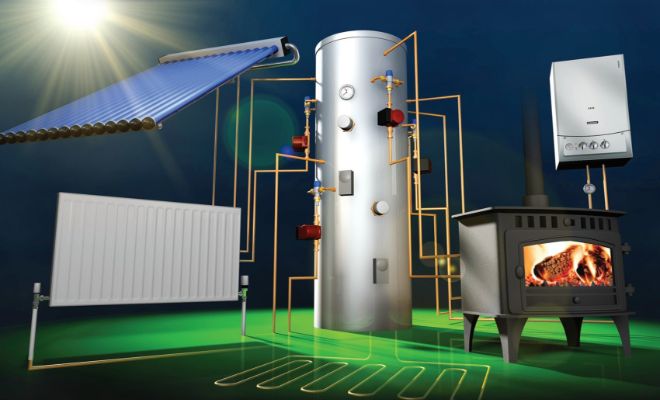
Some thermal stores have plate heat exchangers on the outside of the cylinder but which are directly heated by the stored water within it. A thermal store can be heated from one or more sources such as solar panels, wood-burning stoves, heat pumps or a boiler.
A combination is possible to maximise the system, for example, by using solar panels in summer and a wood-burning stove in winter. When used with multiple heat sources, a good thermal store will select the cheapest heat source when the heat is needed and only call on more expensive options as a last resort.
Thermal stores have been in use and development for about 30-40 years, but with the advent of more renewable energy, they are becoming more popular as a way of storing heat and hot water in an efficient way.Most thermal stores are open vented and therefore, inherently safe. This means that they can be located anywhere within the home as long as the header tank is higher than any radiators.
These vented cylinders do not require discharge pipework as with unvented cylinders and so do not require specialist installation. Unvented thermal stores will be fitted with safety valves and discharge pipework.
How Does a Thermal Store Work?
Water is one of the most effective means of storing heat, and thermal energy that is generated but not used immediately can be stored and used at a later time by this means.
A thermal store holds and maintains water that has been heated by a heat source such as a boiler or heat pump. This water then acts as a heat ‘battery’ to provide hot water for the household but also to serve the space heating in the home such as radiators or underfloor heating.
Coefficient of performance (COP) is a means of rating the efficiency of a system to produce energy by comparing the amount of energy expended to the amount generated. For example, a ground source heat pump may use 1kW of electricity to produce 3kW of energy in the form of hot water.
This would be a coefficient of 3.0. COP is a gauge of how energy efficient a system can be in optimum condition,s however and something that is rarely achieved in a real situation.
Solar Heated Thermal Store
Hot water for domestic use and for heating can be supplied at different temperatures as the thermal store can separate the hotter water at the top of the tank with cooler water at the bottom. This is called stratification, and good thermal stores should be capable of this function.
This is particularly useful if underfloor heating is installed as it usually requires lower temperatures to operate than radiators.
Solar panels can supply the lower grade heat for the base of the cylinder to send to the underfloor heating.
Thermal stores that are connected to solar panels may have two coils for domestic hot water to pass through before reaching the taps. The cold mains water entering the cylinder is passed through the first coil at the base of the cylinder and is preheated.
It then passes through a second coil which raises the temperature further and sends it to the taps at the correct temperature. As it has been preheated, the water takes less heat energy from the top of the tank to reach the required temperature of 50ºC-60ºC, thus maintaining good stratification within the cylinder.
A baffle is often installed in the tank to separate the differing temperatures. It is essentially a metal plate in the middle of the cylinder with a small hole in the centre.
Without it, currents generated during heating from the solar coil could cause the two layers to mix and disrupt the efficiency of the system. The small hole in the centre still allows water from the base of the tank to enter the top of the thermal store when needed.
Ground Source Heat Pump Thermal Store
The efficiency of a ground source heat pump comes from its ability to produce relatively low flow temperatures around 35°C-40°C, which is held in the bottom part of the tank.
Thermal stores for ground source heat pumps will have larger than regular domestic hot water coils to maximise the amount of heat that is captured from the lower part of the cylinder.
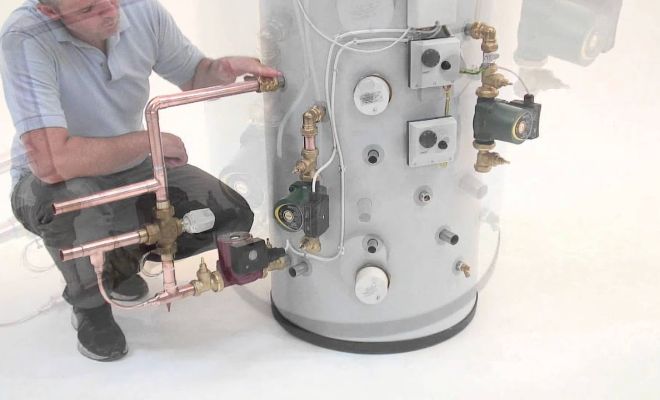
The coefficient for heating this lower layer of water is higher and therefore more cost-effective. To get domestic hot water at 50ºC-60ºC, another source of heat is required, and this can come from solar or other renewable energy or a traditional heat source such as a gas boiler.
Air Source Heat Pump Thermal Store
As with a ground source heat pump, the efficiency of an air source heat pump is at its optimum when providing heat at lower temperatures.
Domestic hot water at 50ºC-60ºC is not achievable with a heat pump alone and will require the input or another energy source to reach that temperature.
The use of plate heat exchangers as opposed to coils may result in a lower temperature drop between the heat generated by the heat pump and the heat delivered to the thermal store.
Heat transfer by coil from the heat pump to the cylinder can result in a temperature drop of up to 5°C.
Plate heat exchangers can reduce this deficit by more than 50% with a temperature drop of only 2°C.
Air source heat pumps will most likely be only one of the heat sources feeding the thermal store with either conventional or other renewables providing back up energy.
This will be necessary for the provision of domestic hot water which an air source heat pump could not do alone.
Wood Burning Thermal Store
A thermal store for biomass boilers including wood burners and pellet stoves will need to be quite large.
This is because the biomass boiler creates large quantities of thermal energy in burning fuel, and this energy needs to be captured, or it will be wasted.
As such, thermal stores for wood-burning heat sources can range in size from 300 litres to 5000 litres.
Not only will the quantity of water held by the thermal store be useful, but when fed by a wood burner, it will also provide heating and hot water when the wood burner is not lit.
A well-insulated thermal store can keep water hot for a couple of days.
Combining wood burning with other heat sources such as solar and a gas-fired boiler will cover just about any eventuality and the ability to store the thermal energy from them means there is constant availability of space heating and domestic hot water.
A vented thermal store is used with a wood burner as it is considered an uncontrolled heat source and cannot be safely used with an unvented cylinder.
An uncontrolled heat source means that it acts intermittently and may be inactive when there is demand for heating or hot water or active when there is none.
There is also the issue of provision of more heat than is required or not enough; hence the term uncontrolled heat source.
What Does Installing a Thermal Store Entail?
The decision to install a thermal store will be combined with the decision about which heating sources are going to fuel it.
In order to make the most of a thermal store, it is common to use one or two renewable heat sources backed up by a more conventional or traditional one.
Therefore, the location of the thermal store is the first decision to be made.
Location
As it is normally a vented system, a thermal store can be installed safely anywhere within the property; however, the size may be a decisive factor.
The cylinder should always be installed vertically on a flat surface that is capable of supporting its weight when it is full.
If it is going into a cupboard, then there should be adequate access for installation and maintenance.
The thermal store should be protected from frost so care should be taken if it is situated in a garage or outbuilding.
Filling the Thermal Store
As the water in the store never changes, it is essential that a scale inhibitor is added to the cylinder when it is filled to prevent scale and corrosion. Once filled the thermal store can be checked to ensure it is heating properly.
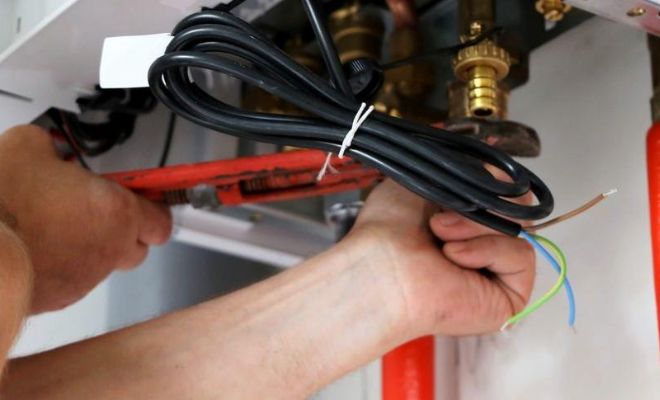
A temperature of 75°C should be reached, and a blending valve should be in situ to mix the hot and cold water that reaches the taps and showers to prevent scalding.
Heat Sources
Most thermal stores come with a variety of inlet and outlet points for the addition of multiple heat sources.
Low-grade heat generators such as air and ground source heat pumps or solar panels are normally added at the bottom of the cylinder.
This aids the stratification or separation of differing temperatures within the thermal store.
The installation and connection of heat sources to the thermal store should be done by following the individual heat source manufacturers instructions and recommendations.
Hand Over
A professional installer will check that the entire system is operating as it should,d and once this is confirmed a hand over to the customer should be done.
This hand over should involve a demonstration of the operating controls of the system, any regular maintenance that is advised and a full set of hard copy instructions. Most installers will guarantee their work, but the length may vary.
The thermal store should come with a manufacturers warranty or guarantee; most are for ten years or more.
Cost Affecting Factors of Installing a Thermal Store
With several types of thermal store available on the market, the type of thermal store that you choose will determine the price that you pay.
Type of Thermal Store
A multi-fuel cylinder which allows several different energy sources to be attached will cost between £2,000-£4,000 making them the most expensive for initial outlay.
However, the savings on energy costs that could be achieved by combining renewable heat sources with more traditional ones means that the system would pay for itself in a relatively short period of time.
Twin coil indirect cylinders whose storage water is heated by a boiler range in price for around £1,000-£1,100. The twin coil means that the cold mains water is preheated by one coil before being brought to up to the required temperature of 50ºC-60ºC by the second.
A single coil thermal store will cost between £900-£1,100 and is capable of providing a flow rate of around 20 litres per minute. As it does not have another coil to preheat the domestic hot water supply, more thermal energy is drawn from the hottest water at the top of the tank.
It will then require more energy to replace this hot water supply. An electric thermal store is ideal for a flat or similarly sized property, and the prices range between £950-£1,400.
They are relatively expensive and the heat source, electricity is probably the least cost-effective of all the options. However, in a small space such as an apartment, it may prove efficient.
Size
Another cost affecting factor to consider is the size of the thermal store you choose to install in your home.
This will depend on the heating and hot water requirements of the property, the number of occupants and the type of heat sources that will be attached to the cylinder, for a domestic property where the thermal store will be positioned within the thermal envelope, the sizes of cylinder range from 140 litres to 500 litres.
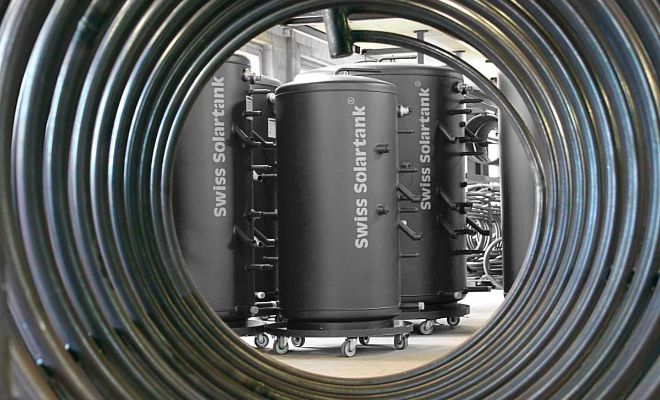
Costs on average are between £900-£4,000. This includes all types of thermal store from multi-fuel, to single and twin coil and electric cylinders.
Complexity of Installation
The difficulty of installation may depend on the location in which the thermal store will be positioned.
While it is advisable to have adequate space around the cylinder for maintenance, some properties do not have large available space and the thermal store may have to be housed in a smaller area.
This could create problems at fitting stage for the installer, and this may lead to a more prolonged and costly installation.
Location of Property
The location of your property may affect the amount that you pay for the materials and labour for your thermal store installation.
Heating engineers and plumber will charge more in London and the south east of the UK with an average hourly rate of around £120 as opposed to an average of £50 per hour in the rest of the country.
For the majority of thermal stores, it would not be necessary for a specialist heating engineer to carry out the installation as most of them are vented. This means that the G3 qualification is not required for a safe installation.
DIY Thermal Store
Installing a thermal store can be done without G3 qualification in the vast majority of instances, which means that a general plumber can carry out the work. Of course, you can hire a heating engineer to install the cylinder, but they do charge more than a plumber.
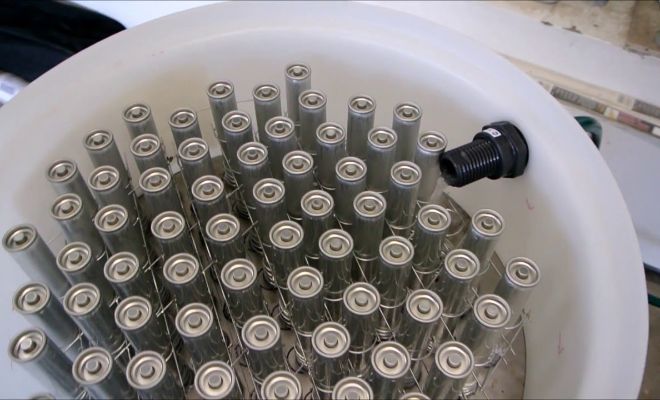
Although it is possible for a competent person to install a thermal store as a DIY project, it is probably advisable to leave it to a qualified installer due to the complex nature of most of the cylinders.
Dangers of DIY Installation
There is always a risk when carrying out a DIY installation, and safety precautions should be taken every time.
Personal protection equipment such as safety boots, goggles and a dust mask may be necessary for jobs such as lifting the cylinder, and drilling holes in walls for access for pipework.
You may need another person to help with some aspects of the job, such as manoeuvring the cylinder into position.
Savings
If you decide to do some of the work yourself and leave other parts to a professional installer, then you could save some money on labour costs.
Removing an old cylinder or making room in the property for the new thermal store is something that could be done DIY saving some money whilst leaving the more technical parts to a professional plumber or heating engineer.
To carry out the entire installation yourself would save around £500-£1,000 in labour costs; however, you should be fully competent in basic plumbing and follow fitting instructions from the manufacturer closely.
A qualified electrician should carry out any wiring.
Approved Document G of the Building Regulations deals with sanitation, hot water safety and water efficiency and can be consulted if you are in any doubt about the thermal store that you are fitting.
If you are unsure whether it falls under notifiable works, you should contact the building control department of your local authority or the manufacturer of the cylinder. A G3 qualified installer must install any unvented cylinder.
Types of Thermal Store
A thermal store can be connected to any type of heat source and can also be used with two or more fuel types in combination.
This could include a gas-fired boiler, normally a condensing boiler, solar panels, air or ground source heat pumps, wood-burning stoves or oil-fired boilers.
The type and size of the thermal store should match the capacity of the heat source.
Wood Burning Systems
Biomass fuel systems burn wood in various forms such as pellets, logs, or chippings.
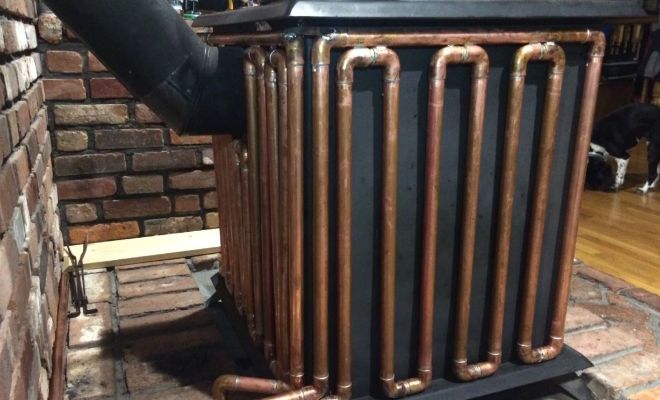
To capture and preserve the heat that is generated from the burning of batches of fuel, it is necessary to connect a thermal store.
The advantages of a thermal store connected to a wood-burning heat source:
- ✔ Large amounts of wood can be burned at one time, thus creating a large store of hot water.
- ✔ Wood burning systems are a renewable source of fuel.
- ✔ Thermal stores attached to wood burners ensure that the energy generated by fuel burning is not wasted.
The disadvantages of a thermal store connected to a wood-burning heat source:
- ✖ Wood for fuel is not as abundant in the UK as in Europe and therefore tends to be more expensive.
- ✖ If the wood burner is teamed with solar heat, the domestic hot water temperature may not be reached in the summer months when the wood burner is not in use.
- ✖ The thermal store required for a wood-burning heat source will be quite large and require a lot of space.
Solar Panels
Solar panels are typically used as a top-up or secondary source of heating.
A solar coil can be added to the base of the thermal store to heat water that is used for underfloor heating as the temperature for this usage does not need to be as high as for radiators.
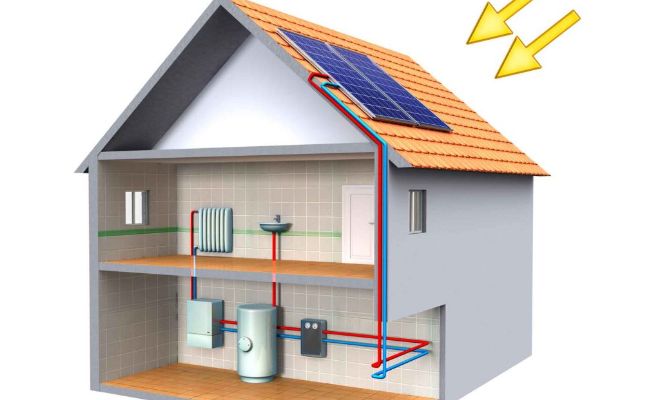
The heat generated via solar panels by its nature will only take place during the day, but the hot water and space heating may be required at night. This control and flexibility is what makes the thermal store an essential part of renewable energy systems.
The advantages of a thermal store connected to solar panels:
- ✔ A renewable and green energy source.
- ✔ The costs for installing solar panels and their ongoing maintenance are low.
- ✔ A good thermal store will prioritise solar heating over other heat sources in a multi-fuel system as long as the solar heating is available.
The disadvantages of a thermal store connected to solar panels:
- ✖ Solar panels will produce a lot of heat in a short period of time and then none for a while, so the thermal store needs to be large to be effective.
- ✖ The temperature required for domestic hot water will not be reached by solar panels alone, and the thermal store will require another heat source.
- ✖ Space for at least 5 square metres of solar panels will be required either on the roof or on a frame in the garden, usually south facing.
Air Source Heat Pump
An air source heat pump draws air from outside and passes it through a liquid refrigerant which in turn is passed through a compressor. This compression process heats the liquid which is then passed through a condenser which transfers the heat to the heating and hot water circuits.
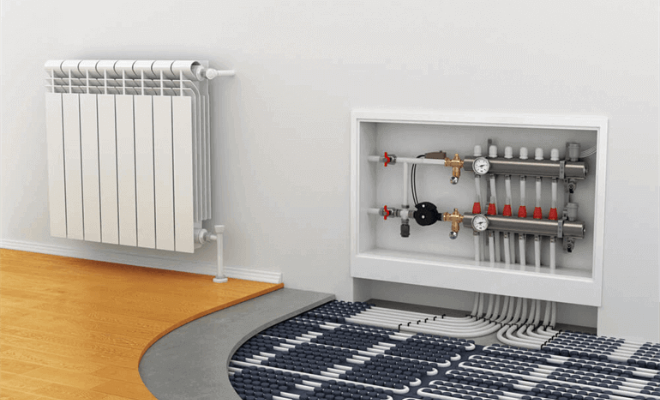
There are two kinds of air source heat pump, air to air and air to water. Air to air heat pumps cannot produce hot water and are only used for space heating or cooling. Air to water heat pumps supply both domestic hot water and space heating via underfloor heating.
The advantages of a thermal store connected to an air source heat pump:
- ✔ Avoids continually turning on and off or ‘short cycling’ which wears down the pump and compressor when demand for heating and hot water is low.
- ✔ A thermal store with air source heat pump is a good off-grid solution in an area with no gas mains.
- ✔ Air source heat pumps are an efficient and environmentally friendly source of heating.
The disadvantages of a thermal store connected to an air source heat pump:
- ✖ Hot water cannot be heated by an air to air heat pump and will require an additional heat source.
- ✖ Air to water heat pumps will best serve underfloor heating (35°C to 44°C) as the temperature requirements are not as high as that needed for radiators (55°C+).
- ✖ Electricity is required to run the heat pump, so the air source heat pump is only semi-renewable.
Ground Source Heat Pump
Pipes containing water and anti-freeze are placed in trenches or bore holes in the ground where the ambient temperature is around 10°C-13°C. The absorbed heat is transferred to a refrigerant which passes through an evaporator to be changed from a liquid to a gas.
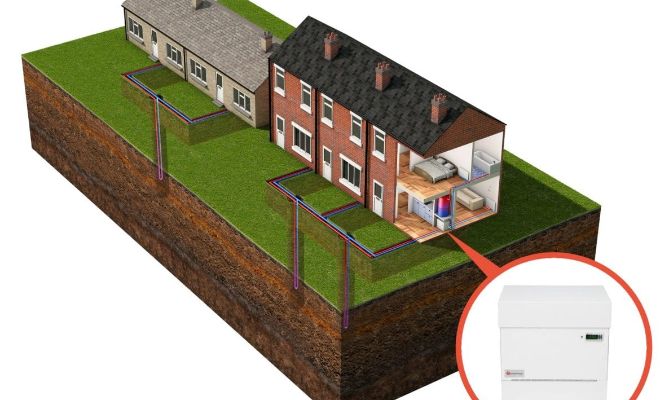
A compressor heats the gas and a condenser transfers this heat to the hot water and heating system. A thermal store connected to a ground source heat pump will provide a battery of heat to be drawn on as and when it is needed.
The advantages of a thermal store connected to a ground source heat pump:
- ✔ Ground source heat pumps are eligible for the Renewable Heat Incentive scheme which pays quarterly lump sums to those who install renewable heat sources.
- ✔ Geothermal energy is constant with no fluctuations making it a reliable and inexhaustible source of heat energy.
- ✔ Although electricity to power the heat pump is necessary running costs for a ground source heat pump are lower than the amount of energy that they produce.
The disadvantages of a thermal store connected to a ground source heat pump:
- ✖ The area required for the installation of the ground source heat pumps water pipes is very large and will require excavation to 1-2 metres deep.
- ✖ Installation costs can be quite high, although the return on investment will be greater than the initial outlay.
- ✖ A ground source heat pump will extract more heat from the ground in the summer than in the winter when the demand for heating will be greater.
Condensing Boiler
Most boilers fitted in the UK today are condensing boilers as they are more efficient than combination boilers.
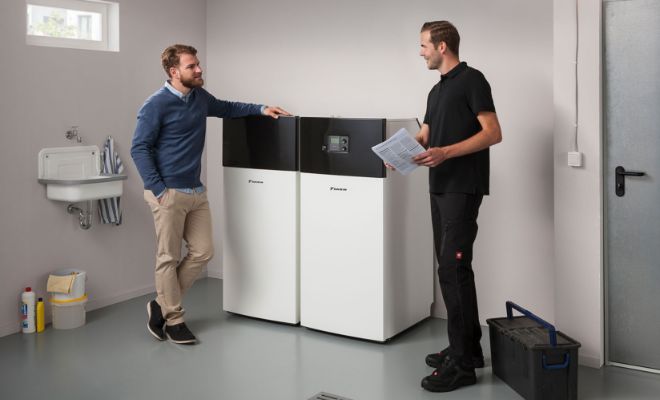
This heat source can be combined with renewable energy such as a wood-burning stove or solar panels, and this is where the thermal store reaches maximum efficiency. The thermal store will always select the cheapest option available to it at the time of demand for water and heating.
The advantages of a thermal store connected to a condensing boiler:
- ✔ A condensing boiler can serve as a back up to renewable heat sources such as air or ground heat pumps or a wood burner to supply the thermal store.
- ✔ Heat supply from a condensing boiler is instant.
- ✔ Efficiency of around 95% is achievable with a condensing boiler making them much more cost-effective than combination boilers.
The disadvantages of a thermal store connected to a condensing boiler:
- ✖ Thermal stores require high water temperatures to work at their most efficient while condensing boilers achieve efficiency at relatively low temperatures making them a poor match.
- ✖ Condensing boilers are more complex than many other heat sources, and servicing and maintenance are essential to ensure they work efficiently.
- ✖ Most effective use of a condensing boiler with a thermal store is in combination with a renewable energy source such as solar panels or wood burner.
Combining Heat Sources
A thermal store is working at its most efficient when it is supplied with more than one heat source.
In fact, it is possible to combine two or three heat sources into a thermal store cylinder although this must be specified at the time of ordering so that the appropriate connections can be fitted.
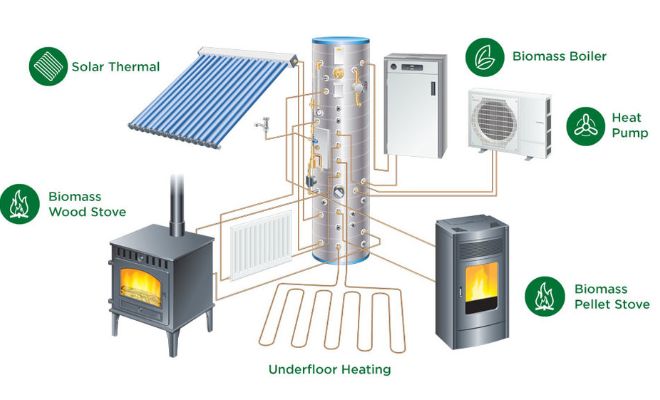
A multi-fuel thermal store will generally include one or more renewable energy sources such as an air source heat pump, wood-burning stove or solar panels.
The advantages of multi-fuel thermal stores:
- ✔ Precise management of the differing fuel sources can be carried out by a good quality thermal store, ensuring efficiency and cost effectiveness.
- ✔ Future proofing for accessing more renewable energy sources as fossil fuels are phased out.
- ✔ Thermal stores can be customised according to the different heat sources that the customer wishes to install.
The disadvantages of multi-fuel thermal stores:
- ✖ As a more complex system and with more components within the thermal store, there is increased potential for things to go wrong.
- ✖ More space will be required for siting the multi-fuel thermal store as it has more connections.
- ✖ Some degree of heat loss may occur within the heat exchanger of a multi-fuel thermal store.
Benefits of a Thermal Store
There are several benefits to having a thermal store.
Energy Management
One of the main benefits of a thermal store is the availability of hot water at any time.
So, while the heat is produced during the day, for example, via solar panels, it does not have to be used immediately and is not wasted.
The ability to store the heat via the thermal store means that the hot water or heat can be accessed when needed giving greater flexibility.
Cost Effectiveness
Most thermal store cylinders are adaptable to multiple heat sources.
This allows a renewable and traditional method of heating to be combined into one heat storage unit, for example, an air source heat pump and a condensing boiler.
The thermal store will also select the cheapest heat source option available at any given time, thereby making it a cost-effective solution.
Efficiency
The ability to ‘dump’ excess heat into the thermal store means that a renewable but uncontrolled heat source such as a wood-burning stove can be used at maximum efficiency without overheating a room.
A thermal store can maintain water at different temperatures within the same cylinder allowing optimum heat for domestic hot water and slightly lower temperatures for underfloor heating.
This ability to stratify variant temperatures is extremely efficient and means that excess energy and heat is not wasted.
Off-Grid Solution
For a property that is not served by mains gas having more than one heat source is not just advisable but usually necessary.
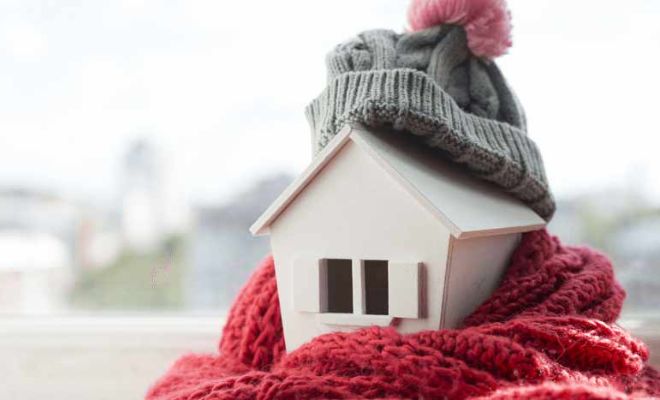
An air or ground source heat pump is an eco-friendly option as a secondary supply to electricity, and both can be utilised by the thermal store.
Low Maintenance
As it is a vented system, there is no need for an annual service as with unvented cylinders thus saving a considerable amount of maintenance cost.
It is often referred to as a ‘fit and forget’ type of system as there is no real input required from the homeowner following installation.
Ease of Installation
The thermal store is easy to install, and there is no requirement for G3 certification on behalf of the installer.
G3 refers to the qualification needed to install unvented cylinders safely, but the thermal store is usually an open vent system and therefore not subject to this condition.
Health Benefits
As the domestic hot water which is generated by the thermal store comes directly from the mains, passing through the cylinder’s heat exchanger, there is no risk of Legionella as the water has not been stored.
In addition, the coils that the water passes through are made from copper which is resistant to the bacteria. Legionella is a waterborne disease that causes a type of pneumonia.
Removing a Thermal Store Cost
A thermal store which has been in place for some years may not be performing as it should and may need to be replaced, or you may want to upgrade to a newer cylinder to add more renewable heat sources.
To hire a plumber to remove a thermal store will cost between £50-£130 per hour depending on where in the UK you live with the higher costs applicable to London.
You may be able to remove the cylinder yourself as long as you are confident with DIY plumbing thus saving the labour cost.
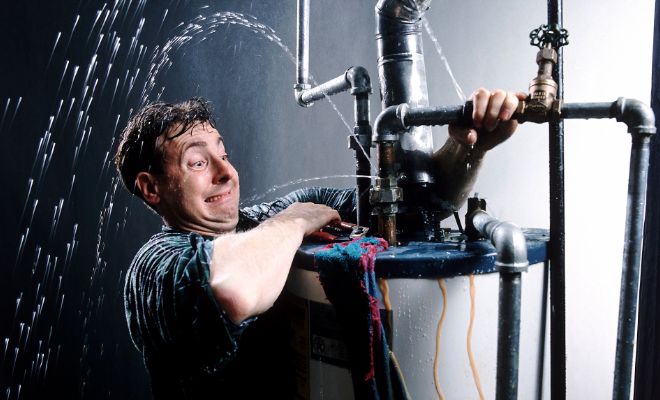
One of the benefits of hiring a plumber or heating engineer to remove an old thermal store is that they may be best placed to dispose of the old thermal store for you.
If it is made from copper, then you may be able to sell it to a scrap metal merchant, but you would have to contact a local dealer to see if they will accept it. Scrap metal recycling is regulated in the UK, and payment should always be by bank transfer or cheque and never by cash.
FAQs
It should also provide sufficient heating and hot water for the size of the household.
The most popular thermal store size by far in the UK is 210 litres, which is typical for an average three-bedroom house.
Instead, it heats the cold mains water via a heat exchanger and delivers it to the taps at the correct temperature.
This water is potable and less likely to contain Legionella, unlike stored water which does pose this risk.
The primary hot water within the thermal store cylinder serves the space heating in the property.
However, the hot water comes directly from the mains passing through a heat exchanger in the thermal store but maintains that pressure as it reaches the taps and showers.
Therefore, a traditional heat source such as a gas boiler or electrical element is combined with the cheaper renewable heat sources, and together they keep the thermal store topped up.
The most important thing is that the thermal store has been sized correctly for the heat sources serving it, the heating and hot water demands of the household and the dimensions of the property.
This, along with the provision that it has been fitted correctly, means it should carry out the function as any other type of cylinder would.
You can contact your water supply company to discuss your options, one of which may be to increase the size of the pipework coming into the property.
If this is not possible, you could install a cold tank fed system with a pump to boost pressure.
How to Find & Hire a Thermal Store Installer
Although the vented thermal store does not require specialist (G3) installation, it is advisable to hire a qualified plumber or heat engineer to carry out the work if only for your peace of mind.
What To Look For in An Installer?
The things to look out for in someone quoting to install a thermal store are familiarity and knowledge of the product.
A professional and reputable installer will take the time to survey the property for heat loss and make recommendations based on these findings. They will be able to explain the functioning, merits, and potential disadvantages of the thermal store for your property with confidence.
Guessing at a size of thermal store and offering no opinions or recommendations is not a good indication of professionality or knowledge and should be viewed with caution.
Supply and Fit Package
Of course, some thermal store providers will offer an installation service as part of a package, and this is perhaps the best option.
You can be confident that the installer has good knowledge of the system, has come across various scenarios and installation issues, and there is the added advantage of a guarantee on the work.
Where to Find a Reputable Installer?
Finding an installer through recommendation is a good idea, especially if the plumber or heat engineer in question has installed thermal stores in the past.
Most plumbers are not required to be registered with an accrediting body, but any heating engineer who works with gas must be Gas Safe registered, and this can be checked on their website.
Being a member of the Chartered Institute of Plumbing and Heat Engineering (CIPHE) is proof of competency, and it is possible to look for a qualified installer through this institute.
Insurance
Adequate insurance is necessary for any tradesperson working in your home. It is within your rights to ask for proof of public liability insurance and professional indemnity insurance before allowing anyone to carry out work at your property.
Sources
https://reddeerlake.fsd38.ab.ca/documents/general/Heat-and-Temperature-Unit3_T7_T8.pdf










